Below are some basic colored pencil techniques. Before you start, you’ll need to gather a few supplies:
• Colored pencils
• Bristol or other drawing paper
• Tortillons, stumps, or colorless blenders
To begin, practice a few colored pencil techniques. Many of the same line techniques used with a pen can be used with colored pencil as well.
Divide your paper into 8 squares. To do this, draw a line down the center of your paper, dividing it in half. Now draw a line down the center in the opposite direction. You have 4 squares now. Turn your paper HORIZONTALLY, and draw another line down the center of each side. You now have 8 squares. Label each square with a number: 1, 2, 3, 4, 5, 6, 7, or 8.
1. Choose a colored pencil. In Square #1, begin HATCHING with your pencil – drawing straight lines close together all going in the same direction. The lines may go horizontally, vertically, or diagonally.
2. In Square #2, use VARIED PRESSURE while hatching. Choose a colored pencil. Now draw a very light line, placing very little pressure on the pencil. Now, add another line right beside your first one, this time placing a little more pressure on the pencil and forming a slightly darker line. Next, bear down even more on the pencil as you draw the third and darkest line. Repeat this pattern until you have filled the entire square.
3. In Square #3, try the colored pencil technique of CONTOUR HATCHING. Remember, contour hatching refers to making many CURVED lines close together all going in the same direction. Contour hatching is often used when drawing round objects. Draw your curved lines in Square #3.
4. In Square #4, choose one colored pencil to try CROSSHATCHING. First, draw a series of lines close together, all going in the same direction (parallel). Remember, this is called HATCHING. Now, using the same pencil, draw another series of lines going in the OPPOSITE direction. This is called CROSSHATCHING.
5. In Square #5, use the colored pencils to STIPPLE. Stippling is a method of drawing in which the entire artwork is created with dots. You can stipple using colored pencils just as you stipple with a pen, placing the dots closer together to produce a darker effect; farther apart to produce a lighter one. Try this using this colored pencil technique in SQUARE #4.
6. In SQUARE #6, try stippling with two colors. When placed close to one another, the two colors will fool your eye, and you’ll see a new, “combined” color. To try this, stipple SQUARE #5 using BLUE or YELLOW (or BLUE and RED). Then, add more dots to the square using YELLOW or BLUE (or RED and BLUE). Where the dots fall on top of each other, they’ll mix to form a new color (such as GREEN or PURPLE). Sometimes, if you hold the paper back a little bit, your eye will even process the two individual colors as one, and you’ll still be able to see the new color.
7. In SQUARE #7, try blending different shades of the same color. Choose one color. Beginning on the left, color very lightly using the pencil; make it a little darker in the middle; color even darker on the far right. Using a tortillon, stump, or blender, go over the colored pencil, blending the three values together.
8. In SQUARE #8, layer the colors. To layer colored pencil, you “stack” one color on top of another. Besides creating new color mixtures, layering also helps change a single, “flat” color by giving it more dimension, warmth, and richness. For this practice, choose two colors to work with. First, divide the square into 3 sections. Next, color 2 sections the square using one color, making all of your strokes go in the same direction. Then, to create the second layer, color the middle and last section with the second color, making all of your strokes go in the OPPOSITE direction. If you wanted to add a third or fourth layer, switch directions each time.





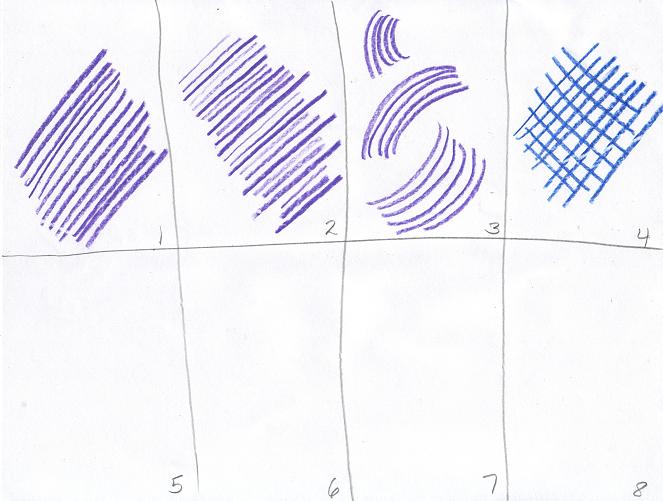
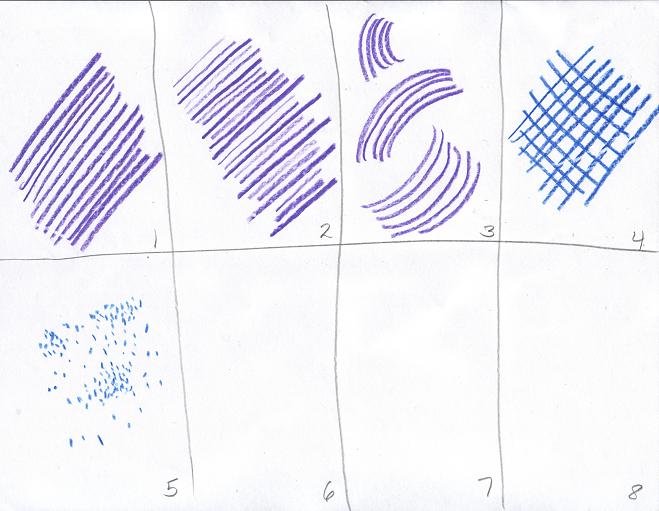
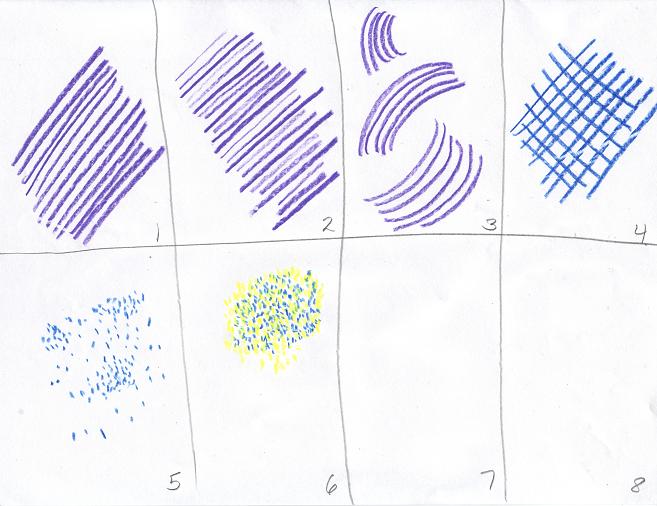
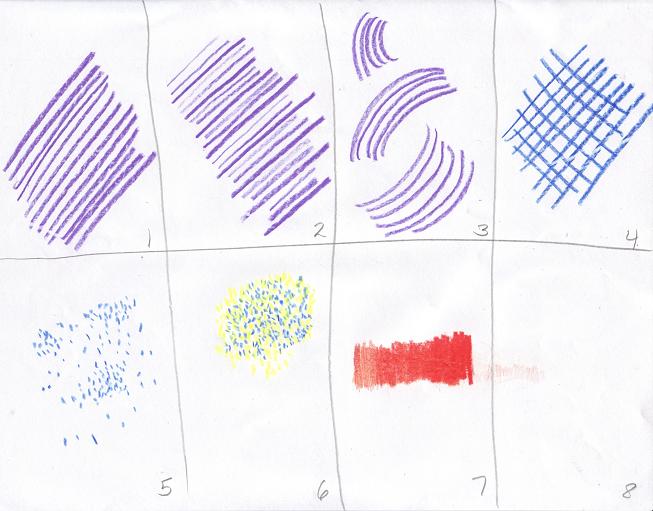
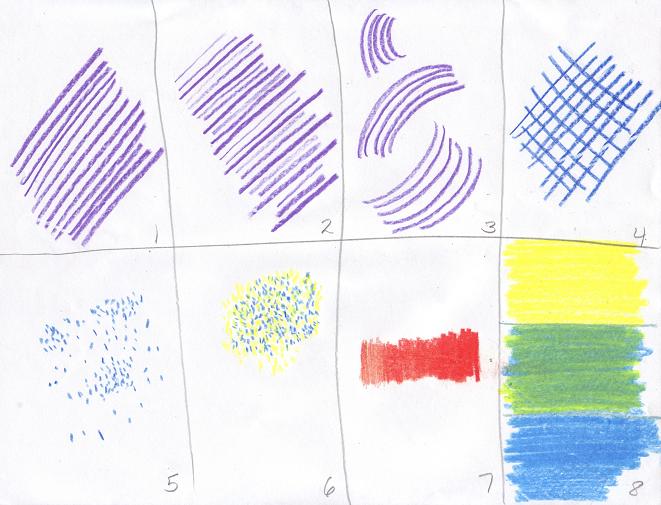
Please note: Only family-friendly comments will be published.